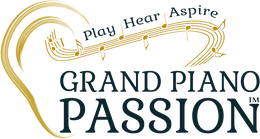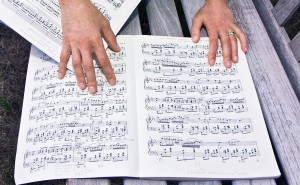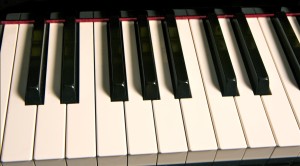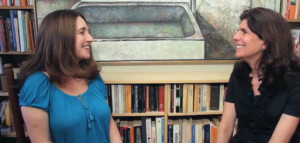“It’s tendonitis,” the doctor said, cradling my left arm. “Playing a lot of tennis?”
“I’ve barely been on the court,” I replied. “It’s not tennis. It’s Mozart.”
“Pardon?”
“I’ve been learning Mozart’s Rondo Alla Turca. I probably overdid it.”
She agreed. “All that repetitive motion has inflamed the tendons in your forearm.”
Her solution? Rest the wounded left arm and allow the injury to heal. My solution? Learn to how to practice correctly.
The pain, truth be told, began months before seeking medical advice. By the time I was in the doctor’s office, I could barely squeeze my hand without throbbing repercussions. Carrying a handbag in my left hand was no longer an option, and I winced with pain at the steering wheel. Thankfully, piano lessons were on hiatus for the summer.
Having already performed the first two movements of K.331, I was determined to complete the sonata. Listening to Mitsuko Uchida’s recording of the Alla Turca, I was fully aware that achieving anything close to her dynamism was far beyond my amateur abilities. Still, it was performance, not learning, that had been central to my quest. I’d even begun to visualize the recital: Standing at the piano, I’d announce the Alla Turca, and, after an imperfect but spirited performance, bow to enthusiastic applause. “Brava, Robin,” they’d chant.
Hopefully, that may one day be the case, but based on my injury, I had a long way to go. Since my first lesson, over a decade ago, my piano teacher had emphasized the importance of using my arm, not fingers, to generate sound. “Connect into your arm,” Denise would repeat. “Can you feel the movement starting from deep in your back or is it coming from your fingers?”
She explained that the hand and fingers were extensions of the arm, a much larger support system than the fingers. Using the arm to control movement around the piano will help to get the fingers to the next group of notes. In this way, the music becomes groups and phrases, as opposed to mere notes. And, by internalizing these connections, the tension that was so prominent in my playing would eventually lessen.
On paper, the left hand harmony was clear-cut; a roll through an A major arpeggio. Left pinky on low A, brushing across C-sharp and E, with arrival one octave up. Repeat that higher A for four beats, then to arpeggios of D, D-sharp and E, resolving back to the A major.
With the left pinky clinging to the low A and thumb straining to reach the octave, I practiced rigorously and ignored all of Denise’s teaching. Later, I knew it was my incorrect practice that had caused the tendonitis.
With Denise on vacation, I turned to Feldenkrais instructor Andrew Gibbons. A pianist himself, Andrew was well versed in piano injury. I’d attended workshops he’d given to our group on piano posture and practice and he’d also helped me overcome tennis injuries.
The Feldenkrais website states clearly, “Through this Method, you can increase your ease and range of motion, improve your flexibility and coordination, and rediscover your innate capacity for graceful, efficient movement.”
Sitting at Andrew’s piano, I pulled out the music and began playing. “Stop,” he said. “You’re not moving your arm at all. Look how twisted it is.”
“I know, but I’m worried I won’t make it back down to the low A in time.”
“Forget about performing the music. For at least three weeks don’t play the whole piece. Instead, concentrate only on the roll and observe what’s happening in your body.” He demonstrated by extending his elbow and his arm out to the side to the low A, then, in slow motion, straightened the entire arm. It looked like it was floating. His hand was now positioned on the remaining notes of the arpeggio. I spent the hour repeating that gesture until reaching a smooth, even sound. My arm wasn’t tense, I wasn’t anxious, and my fingers had stopped gripping the keys. “Think about how you’re going to move through the roll up to the octave, with your arm delivering the fingers to the keys. Can you do that by first locating a connection deep in your back?”
Working at a snail’s pace and fighting the urge to play through the Alla Turca, and observing my body, I allowed my arm to guide that octave trek. And in so doing, phrases began to replace individual notes.
Devising a strategy to aid in making this elusive arm/back/shoulder connection, I visualized myself a marionette whose arms were strings. An invisible puppeteer controlled their movement and, before sitting down to practice, I stood at the piano swinging them back and forth. This makeshift calisthenics enabled my shoulders to relax and recognize that the hands were really extensions of a powerful body part.
Ordinary activities like opening the refrigerator door, lifting a coffee cup, and brushing my teeth all became opportunities to practice initiating movement from the deep spot in my back.
The tendonitis is almost gone. And though I’m playing through the entire Alla Turca, I’ve shelved my performance dream. For now, I’m happy to learn how to practice.




The Feldenkrais method is part of the basis for the Taubman piano technique. I have pretty severe arthtitis in my thumbs and some fingers, but at age 73 I am, as a beginner , able to play piano without pain, because of my wonderful teacher, Alison Cheroff, who teaches the Taubman technique. The Golandsky Institute is carrying with Dorothy Taubmann’s ideas. I would highly recommend this kind of work for anyone, to get out of pain or remain pain-free.
https://thepainfreepianist.com/aboutalisoncheroff.html
https://www.golandskyinstitute.org/
https://www.youtube.com/user/TaubmanGolandsky/videos
Although you can learn a lot from the videos, especially the full instructional ones, a teacher is essential . It sounds like your teacher has got it right!
Hi, just wonder how long do you take to recover? I’m currently suffering from tendonitus practising Schumann’s.
Hi Helena,
It took several weeks, maybe a month, and for that time I practiced very little. My teacher always says if you have an injury, it’s essential to stop so you can heal properly. I know how hard it is to force yourself to stop practicing. Since that time, I’ve become very mindful of how I’m using my fingers, wrist and arm so as to not incur another bout of tendinitis. I hope you feel better soon. Best, Robin
Hi ..how did you recover so far….my right pinky is injured?